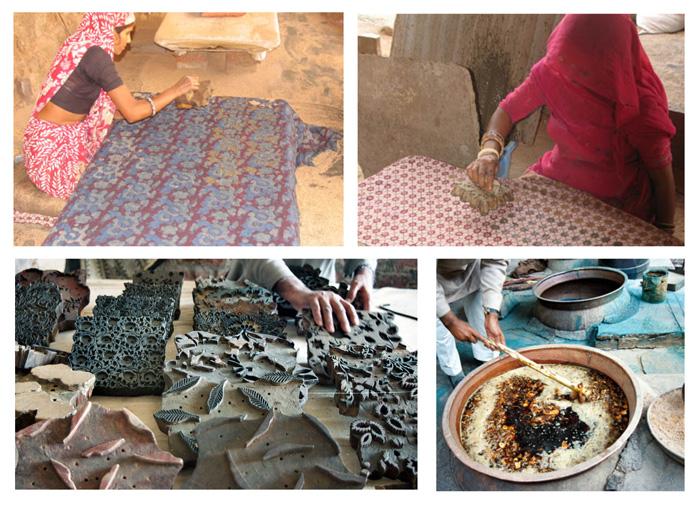The traditional process of hand block printing on textiles, with rich natural colors, has been practiced in Rajasthan for around 500 years. Block printing was introduced to the Jaipur region of Rajasthan by the Chhipa community. This community was originally located in Bagru Village, an area now famous for its vegetable dye and mud resist (dabu) block prints. The art of block printing has been passed down for generations within families and communities and has branched out in recent decades to other regions such as Sanganer, just South of Jaipur. In traditional Bagru style block printing, the ‘recipes’ for the traditional plant-based dyes are developed within each family and kept alive from generation to generation. The colors are dependent on the quality of the plants, the water and skill and knowledge of the printing masters. In more recent forms of block printing, such as those practiced in Sanganer, colors are mixed using AZO free pigment dyes.
Traditional Bagru designs reflect nature in floral, leaf and geometric motifs. Later techniques incorporated Persian motifs and developed block printing into a highly intricate style.
In recent decades, designers from the West have worked closely with local artisans to create Indo-Western styles which are inspired by other cultures, pop-art, nature and cityscapes. This collaboration has been beneficial for everyone as new designs emerge, but also it helps to tell the story of block printing and keeps the market alive. (Source: meherashaw.












